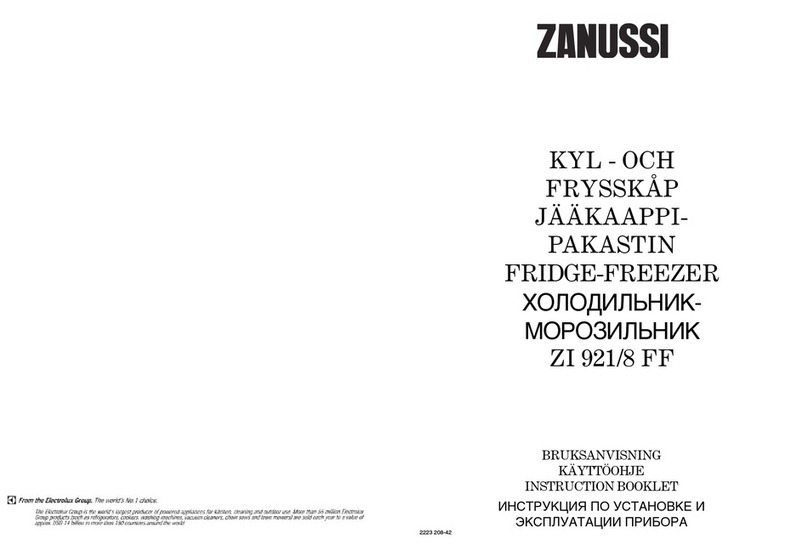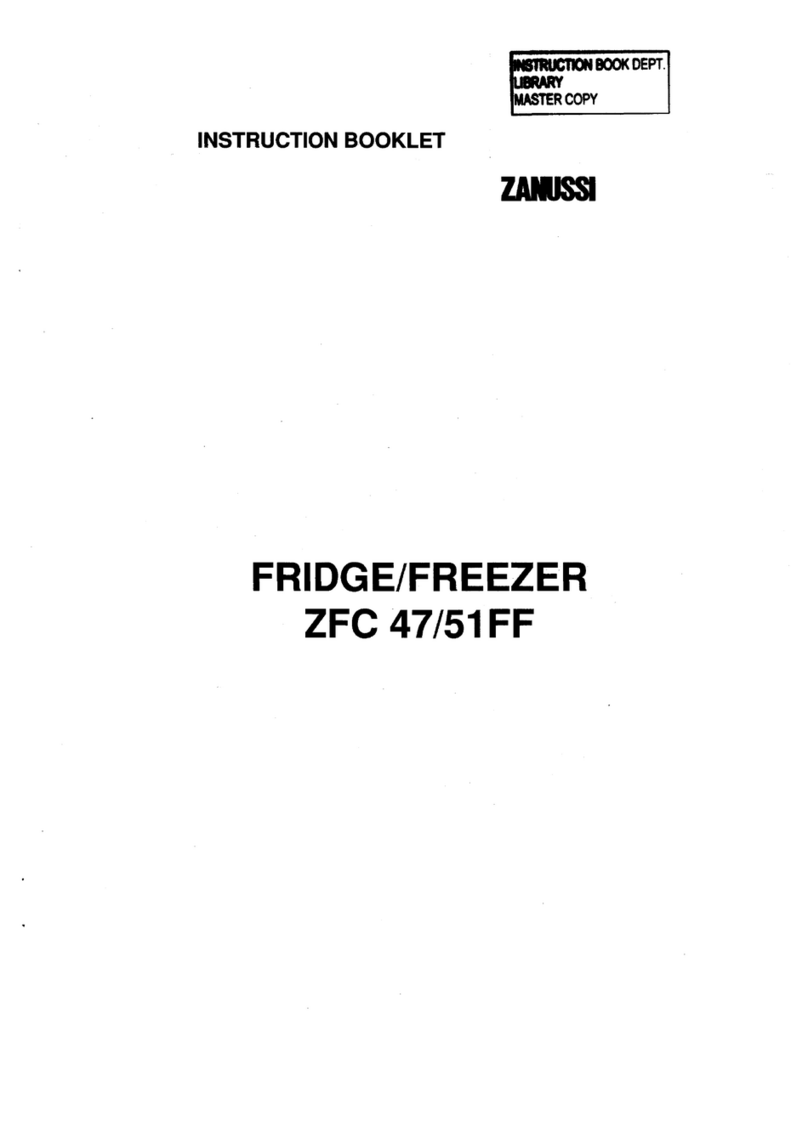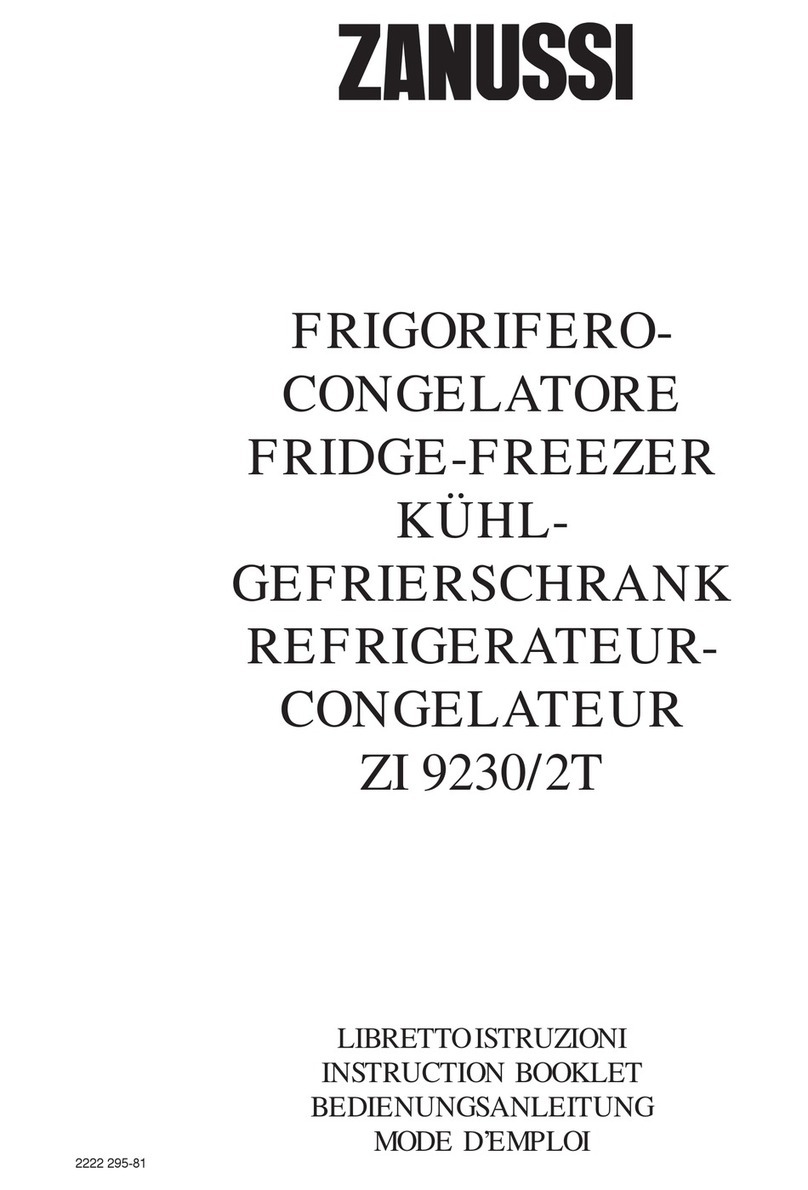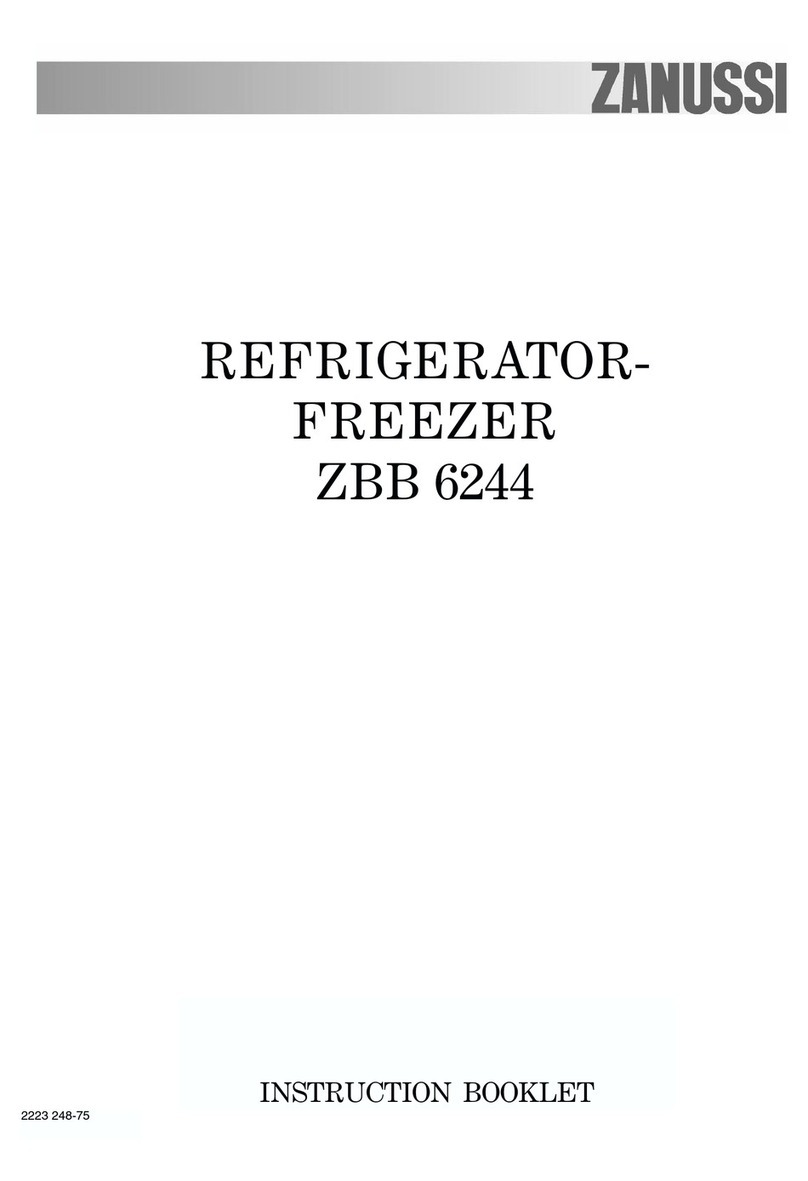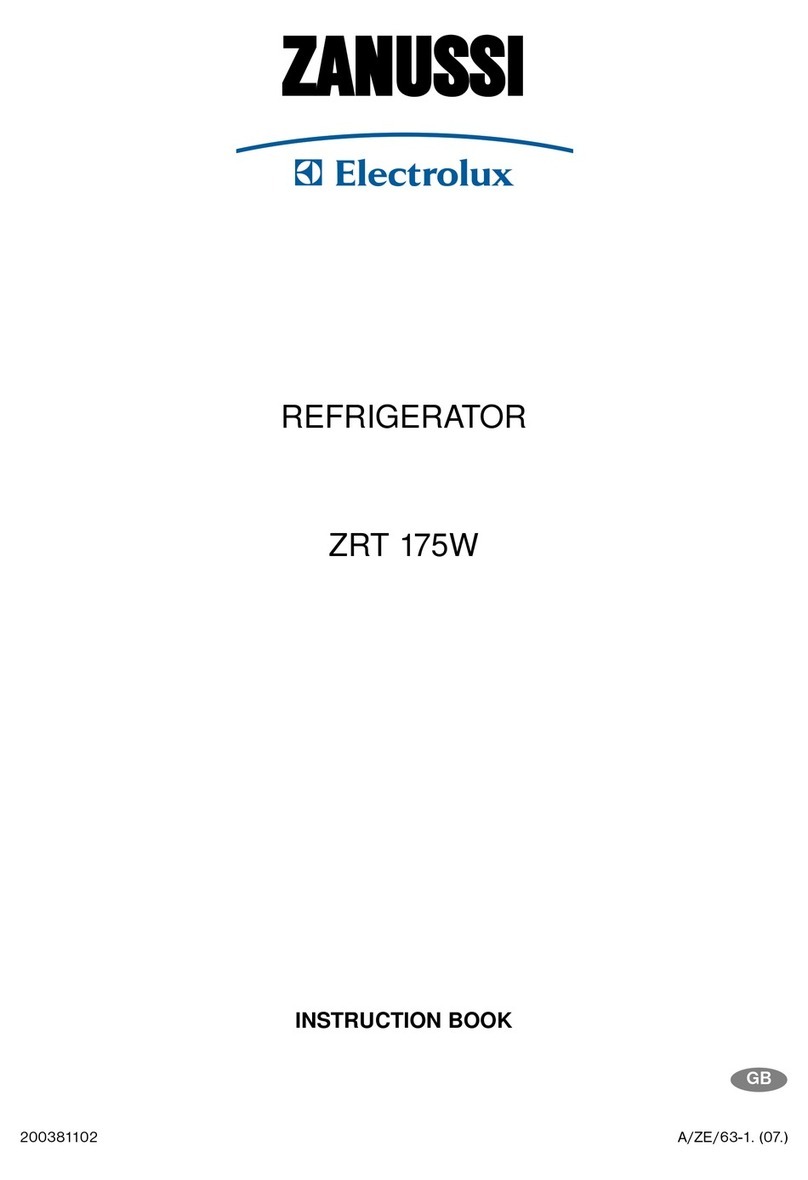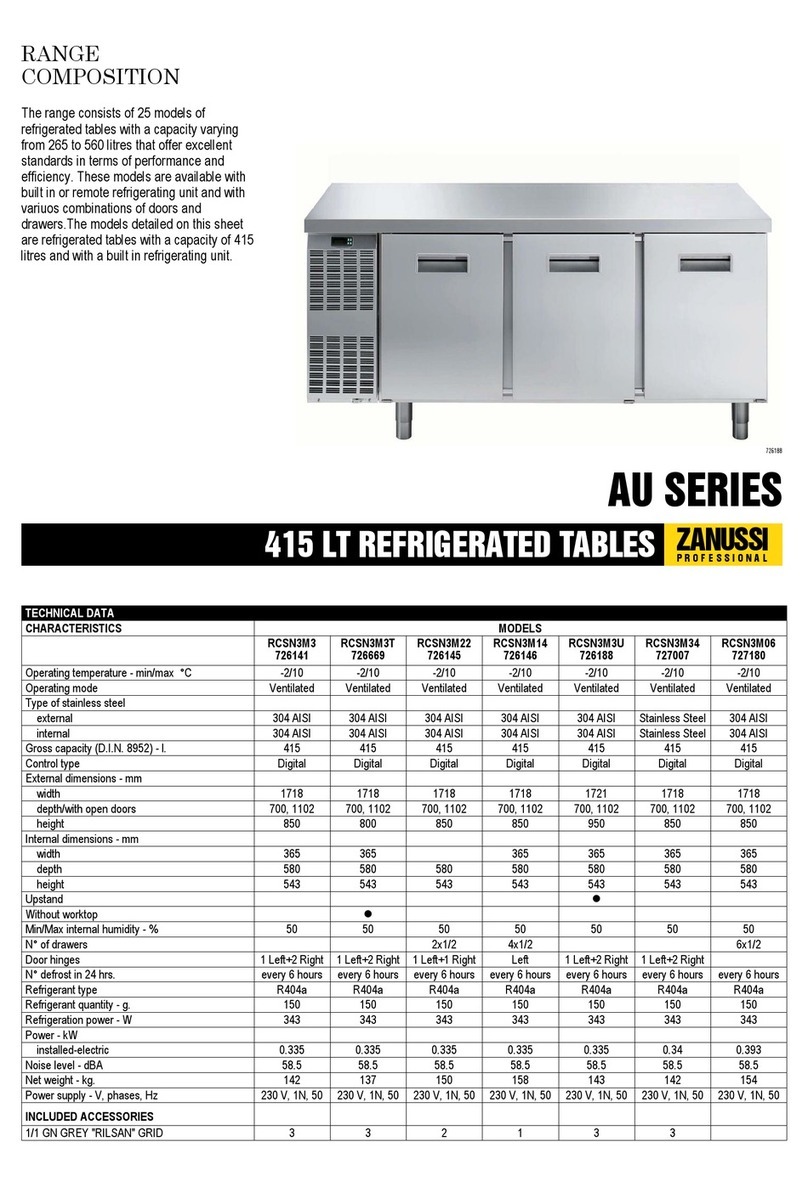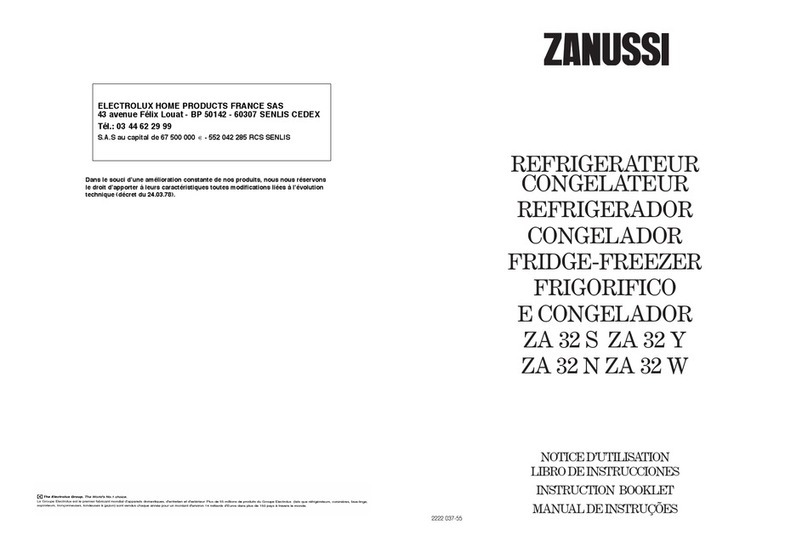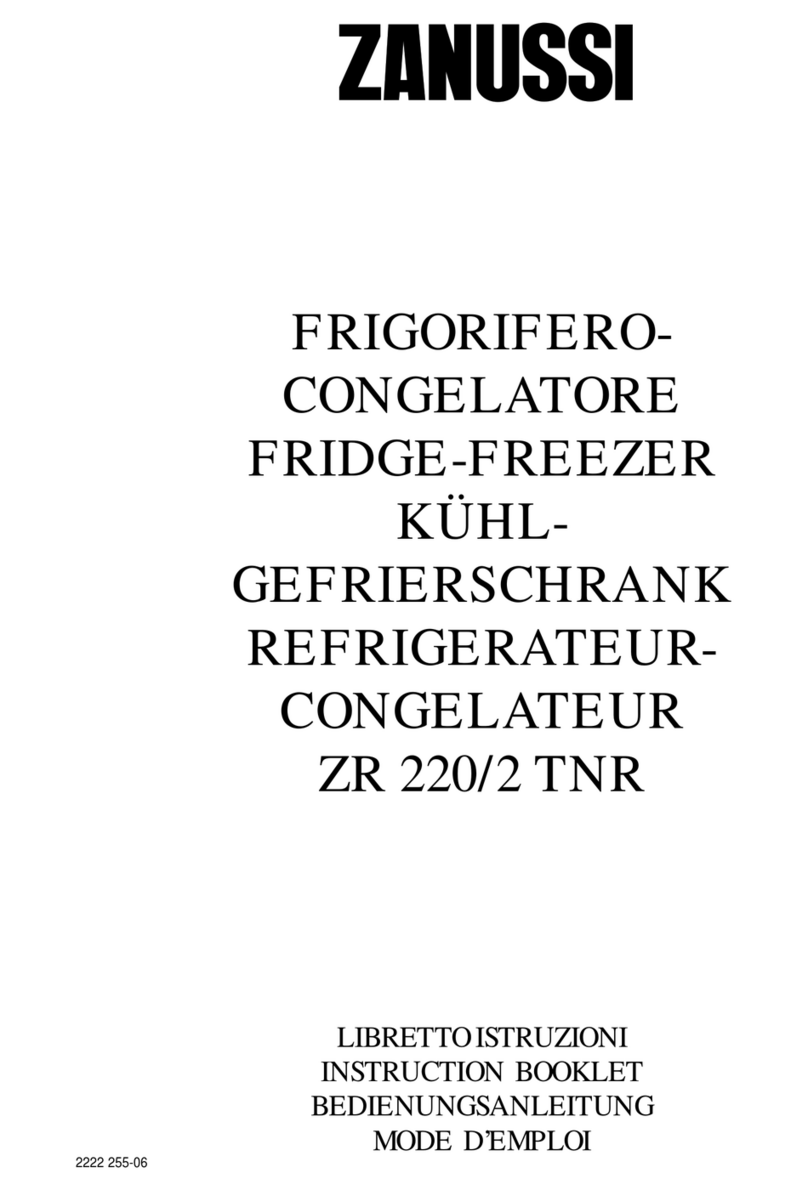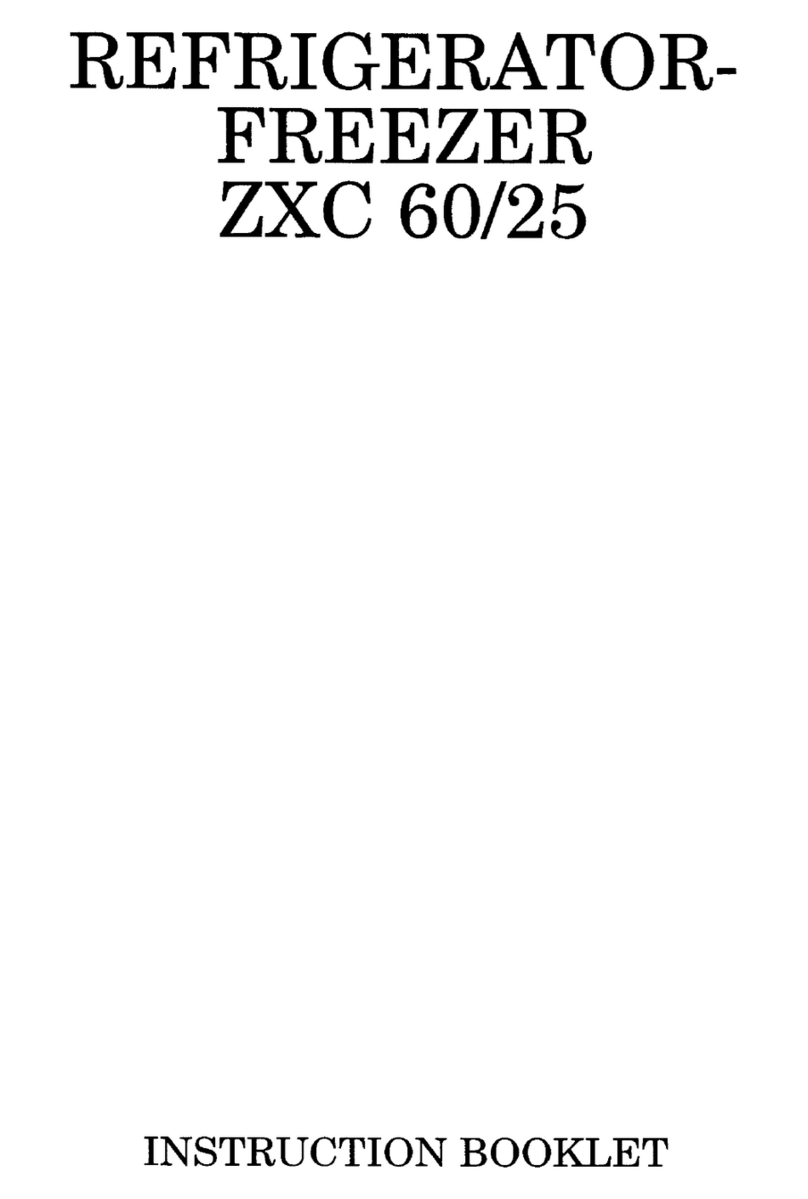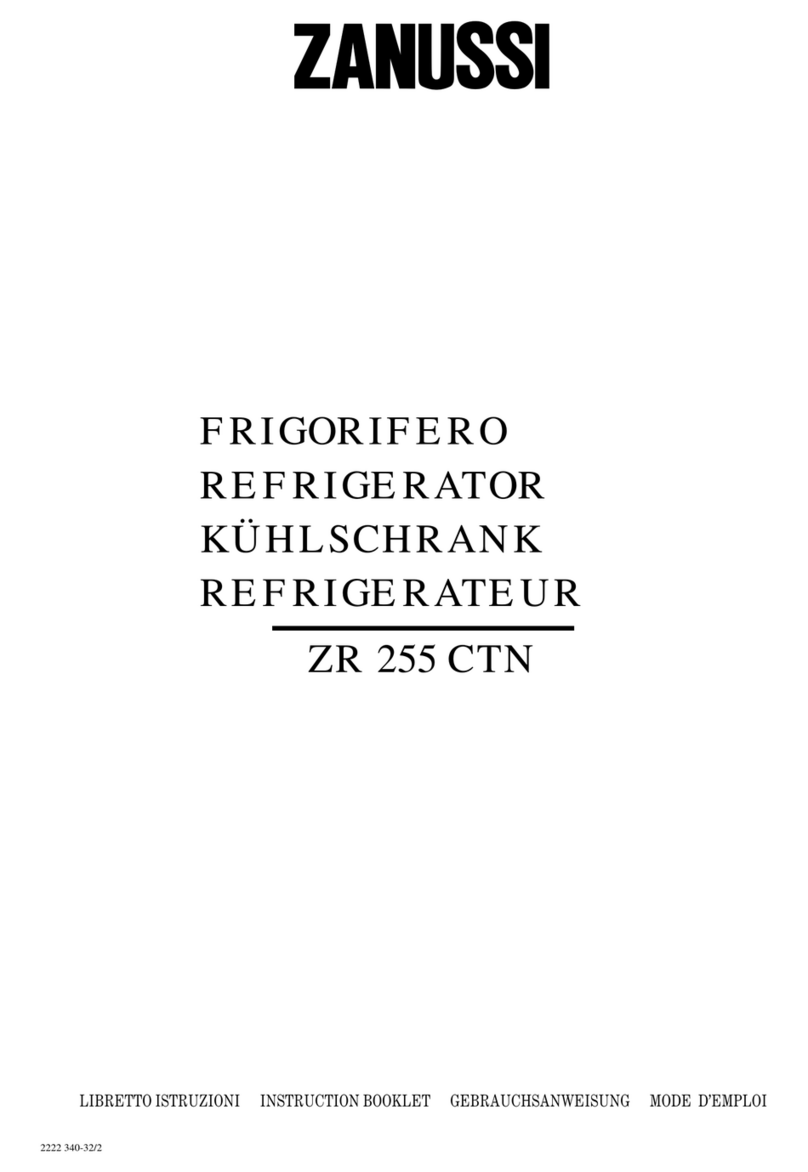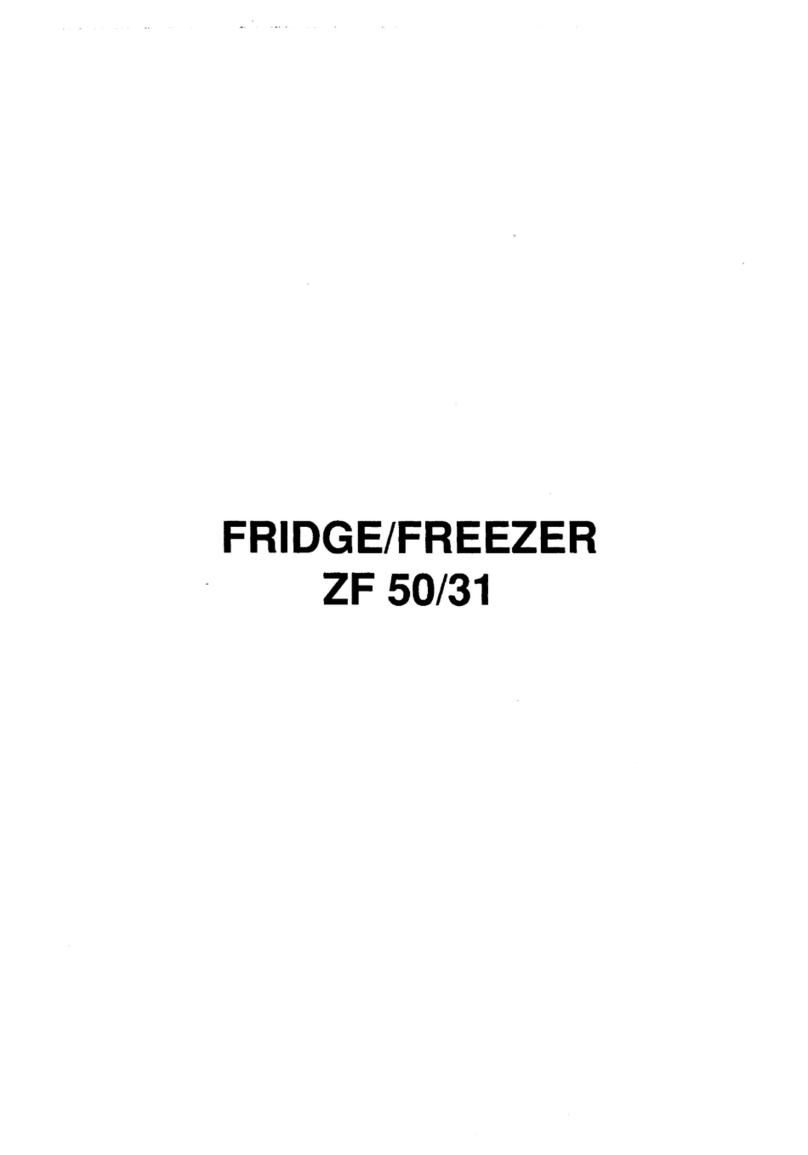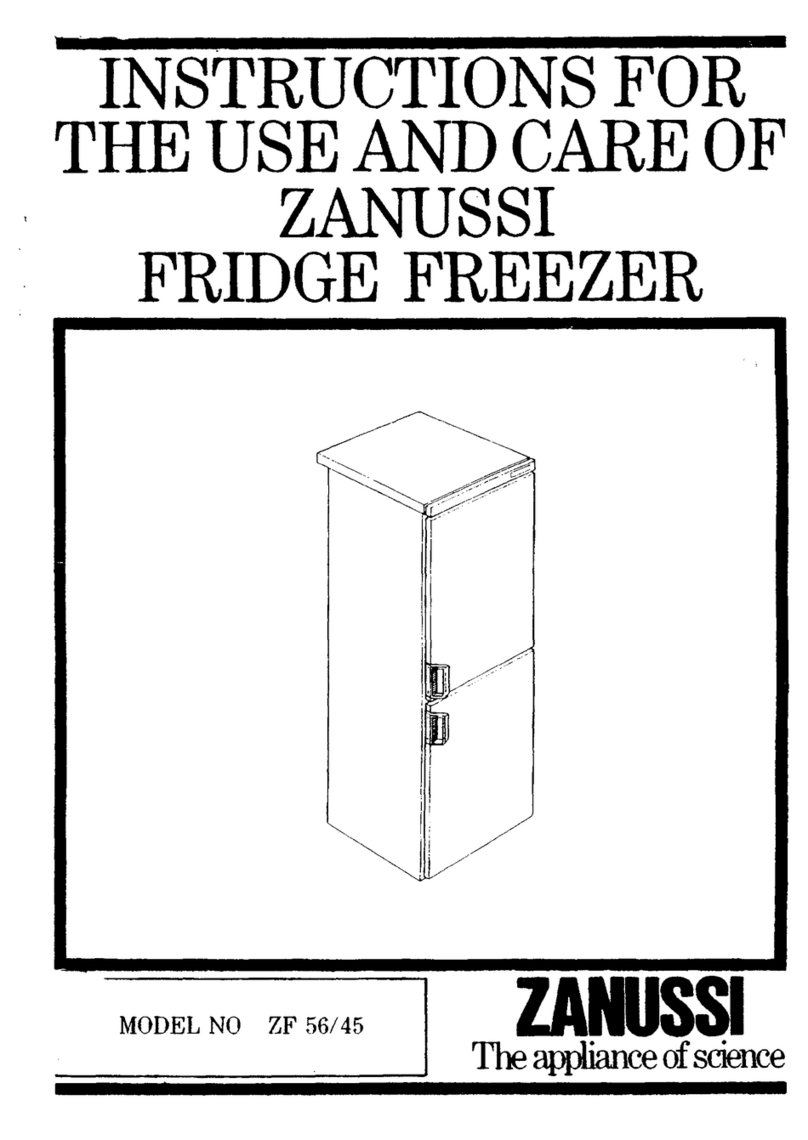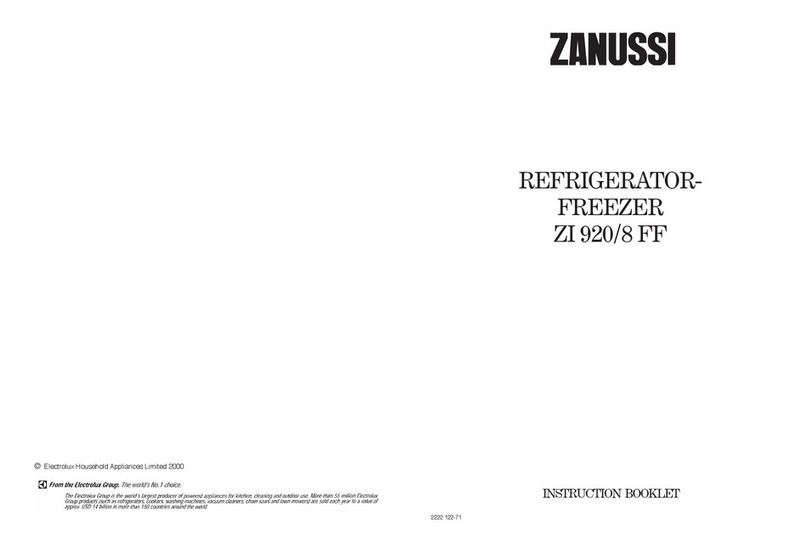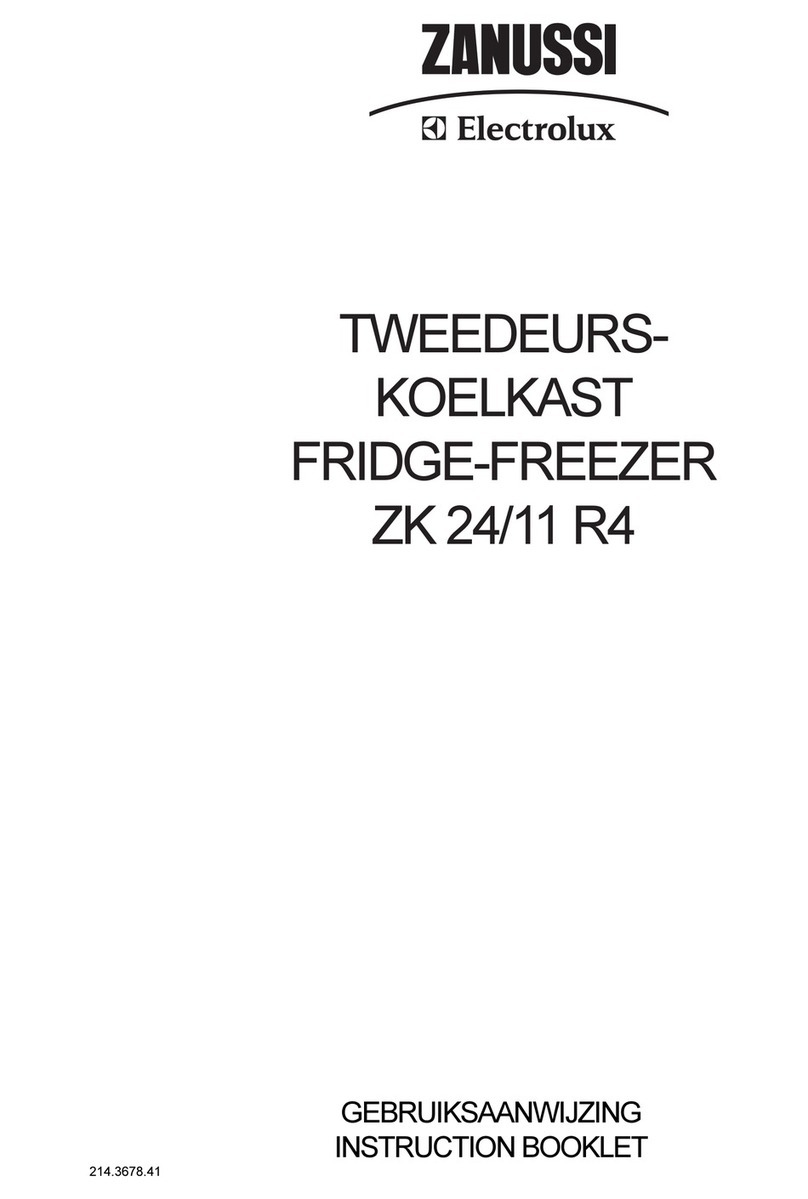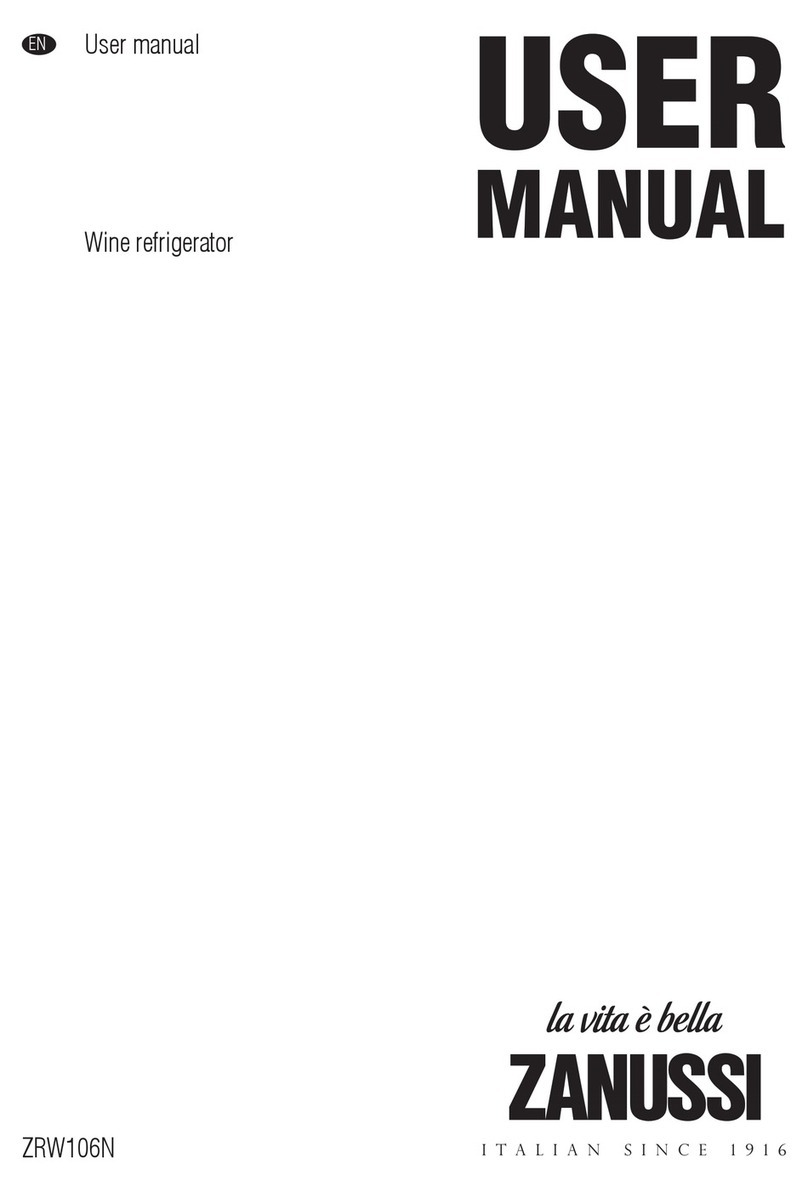20
How to use your
Refrigerator-Freezer
«Temperature Control».
If the appliance should be accidentally switched off
by a fault or power cut, take the following precau-
tions:
Keep the doors closed at all times.
Find out how long the stoppage is expected to
last.
Once normal power is restored:
A) If the freezer is full and the stoppage has been
less than «Time for temperature Rise» indica-
ted for each model in the «Technical Features»
section, then no damage will have been caused
to the food.
B) If the freezer is not full, the cold will be lost
more quickly. If the food has not started to thaw,
then follow the instructions in «A».
C) If the food has begun to thaw, use them up as
quickly as possible, or cook them and refreeze
them.
Refrigerator Compartment:
This compartment is for storing drinks and
fresh food products.
The temperature inside is very evenly distribu-
ted. Make sure food does not touch the back
wall, since behind this surface is where the cold is
generated and food could bee partially frozen.
Also, this can impede the circulation of cold air.
This appliance is provided with an automatic
defrosting system. Consequently you will someti-
mes notice a thin layer of ice or drops of water on
the rear wall.
Freezer Compartment
This freezer, is marked , and is suitable
for freezing fresh foodstuffs and keeping food for
long periods.
Freezing of food
Freezing should take place as quickly as possible, in a
maximum of 24 hours. The procedure for this is as
follows:
1... Set the «Temperature Control» «e» to position
maximum.
If the freezer was switched off and empty, 3 hours
prior to placing the food to be frozen.
If the freezer is already operating and contains
frozen food, 24 hours before placing the food to
be frozen.
2... The maximum amount which can be frozen in 24
hours is indicated in the section «Technical
Features».
3... Place the food to be frozen inside the lower com-
partment of the freezer. When needed, the maxi-
mum frozen capacity can be obtained by taking off
the lower freezer tray and the closest drawer.
4... Red light «a», may be on for a few hours during
freezing process. Switch-on time for this light will
vary according to amount of food being put in for
congelation and time while door remains open.
5... 24 hours after the food in the freezer, the freezing
process can be regarded as complete.
6... Set the «Temperature Control» «e» in a middle
position.
Keeping frozen food
For optimum consevation, the temperature inside the
freezer compartment must be at least -18°C.
This temperature is adjusted automatically.
Check that the «Temperature Control» is in a middle
position. Sometimes it may be necessary (insufficient
ventilation, high roon temperature, frequent opening
and closing of the door) to change the position of the
